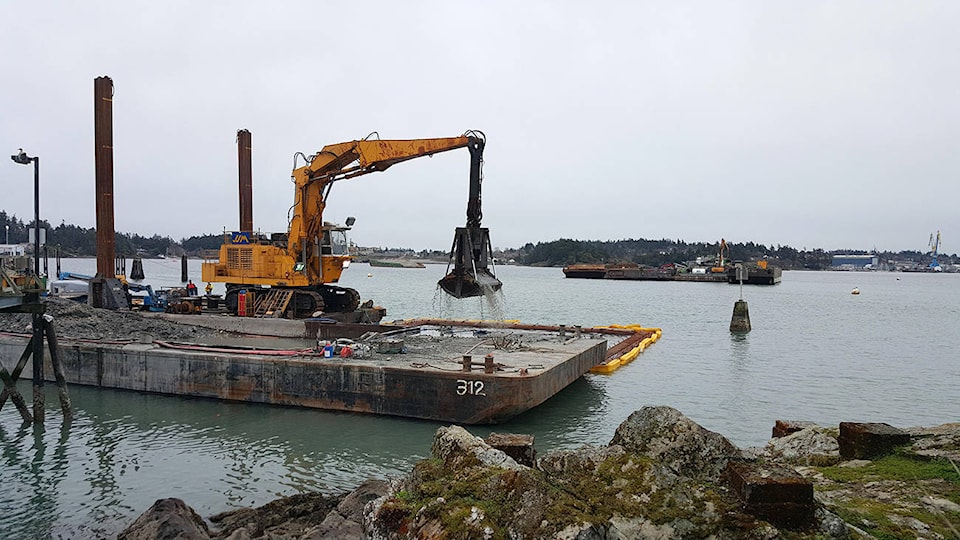Pamela Roth
VICTORIA NEWS
When Duane Freeman looks at the water in the Esquimalt Harbour, it appears to be clean. But underneath the surface there’s a much different story.
A number of contaminants, such as metals from ship paint and hydrocarbons, have been found in the sediments of the harbour that was used for shipbuilding and repair during the Second World War — a time when things were commonly thrown over the side and into the water.
Some operational dredging occurred in the 1990s, but it wasn’t until 2015 that the Department of National Defence (DND) got serious about cleaning up the harbour and started the lengthy task of remediating the contaminated sediments.
“They used to just scrape it (paint) and go right into the water. That’s how they did it back then, but now we contain everything,” said Freeman, safety and environmental officer for CFB Esquimalt.
The impact of the contaminants on marine life has been quite significant, noted Freeman, with a detailed risk assessment showing the contaminants were moving through the food chain. Now a fishing advisory is in place for the harbour that limits the amount of crabs and fish caught by fishermen.
In order to remove high levels of contaminants identified in six hot spots (around the jetties and wherever there was industrial shoreline activity), crews use an excavator with a giant bucket sitting on a barge. The bucket has a GPS on it to tell exactly where the bucket is when it goes into the sediment that’s been identified as polluted. The sediment is then carefully sifted so contaminants can be disposed of in a way that meets environmental standards. Clean fill materials are used to return the jetty areas to their original depth and surface conditions.
During the sifting process, some unique items have emerged — thousands of pieces of naval history. Objects ranging from tobacco pipes, cutlery dishes, and wedding rings, to diving knives, a personalized straight razor, service medals, buttons from uniforms and a couple thousand boot soles have been sifted from the mud. Some of the items date back as early as 1914.
For Freeman, one of the most surprising finds are intact wallets that are 70 years old.
“They are completely preserved like they were lost from somebody yesterday,” said Freeman, noting the items will likely be transferred to a museum if they can’t be reunited with their rightful owners or their families. “All of it was a surprise. We didn’t expect to find as much materials as we came across.”
The remediation project is slated to be completed by March 2020 at a cost of $162 million. Freeman estimates about 20 per cent of the work has been completed thus far, with about 20,000 items collected, including thousands of bottles that have gone to recycling.
Three artificial reefs have also been built in the harbour and are now fully functioning with vegetation.
The next step, said Freeman, is completing infrastructure improvement projects, such as a new A and B Jetty and small boat facility, along with continuing the transformation of the dockyard in support of a 21 century navy.
The existing A/B jetties were built in the World War II era and are considered to be well beyond their service life. The new A jetty is slated to be operational by 2024.
editor@vicnews.com
